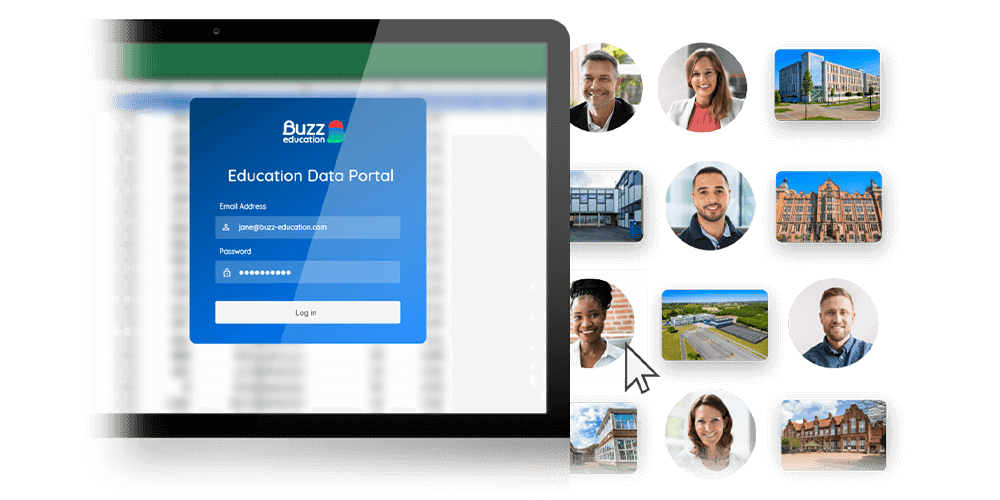


3 questions to help create your targeted education mailing list

The key to generating high-quality education leads is connecting with the right contacts.
That’s where we can help. Our education database has over 670,000 education staff and 30,000 UK schools to choose from, so you’ll be able to easily identify the right targets for your mailing lists.
It’s easy to assume that the best way to maximise your reach is to connect with every single school, teacher and decision maker. However, a targeted education mailing list ensures that your message reaches the right educators, increasing your chances of positive engagement and lead generation.
The wrong mailing list could lead to low engagement and more unsubscribes, two things you don’t want!
So, how do you build a targeted education list that works? Here are 3 questions to ask yourself.
1. Who are your ideal education leads?
There are different types and phases of education in the UK, plus a variety of teaching and support staff roles, so it’s important to understand who your ideal education contacts are.
We’d recommend considering the following:
- If your product or service is relevant to the whole school, make sure you add the senior leadership team to your mailing list as they’re the main strategic and financial decision makers.
- If your offering is subject-specific, think about targeting the heads of department, subject coordinators, and subject teachers. Teachers are often key influencers in the decision-making process as they’re the end-users of many classroom and subject-related products.
- If your product is for a specific age group, heads of year and key stage coordinators are good contacts to include.
Buzz’s Top Tip
Segment your audience.
If your offering is suitable for multiple school phases, we recommend sending separate marketing campaigns.
For example, secondary schools are less likely to engage with emails that include products for primary schools, so it’s worth segmenting your education mailing list and creating content that highlights the benefits for each phase of school you’re targeting.
You could also segment your education data by:
- Location
- Job title
- Type of school
- Percentage of children on free school meals
- Ofsted rating
- Number of pupils

2. Who makes the spending decisions for your offering?
You’ll need to consider the financial costs of your product or service. Most of the organisations we work with include head teachers or business managers in their mailing list – simply because they’re the key decision makers. And they’re right – our school surveys showed that:
- 66% of head teachers and business managers approve all school spending.
- 100% of business managers regularly review spending ideas from other staff members.
But it’s important not to forget the role of other teachers and education staff. We know that:
- 52% of teachers have their own small budget to use for learning resources and classroom supplies.
- 73% of this budget goes towards department-wide resources.
Heads of department and subject teachers will often research suppliers, agree spending amounts, allocate budgets across the department, and make any decisions before getting final sign-off from the business manager.
Remember also that any heads of department and teachers who don’t have a budget of their own can still be huge influencers. If you’re selling teaching resources or classroom equipment, what better person to be your product advocate than the teacher themselves?
3. How much budget is needed?
It’s important to note that, if a large budget is needed, senior staff members must be involved in the decision-making process. For example, we know that products or services that are on the higher end of a school’s budget must be approved by the school governing body, and they typically ask for three quotes to put forward.
So, when choosing your education mailing list, consider the following:
- Is your offering free?
- Is it a low-budget, cost-effective solution?
- Does it need an ongoing financial commitment?
- Will the decision-making process be longer due to how much the school needs to invest?
Buzz’s Inside Insight: 82% of teachers and decision makers in our School Survey told us that the price of the product is what causes them to switch suppliers.
If your product is free, we recommend sending it directly to the staff members who will benefit, such as subject teachers. They’ll be able to access it straight away without needing approval.
Buzz’s Top Tip
Even if what you’re offering isn’t free, you can still provide a free resource to download or a free trial. It’s the perfect way to introduce your wider products or services to schools.
Consider whether your product or service is…
- A low-budget solution
If you’re promoting something that’s subject specific, e.g., maths workshops, we recommend targeting heads of department and subject teachers. This is because we know that 71% of departments manage their own budget, and 52% of teachers have a small budget of their own (sometimes up to £5,000). - Over £5,000
Target the senior leadership team, in particular the head teachers. Primary school head teachers can usually approve all spending up to £10,000 and secondary head teachers can approve spending up to £15,000. - Higher levels
You should target senior leaders, especially head teachers and the chair of governors. The chair of governors usually works with the SLT and the full governing body to approve all purchases over £20,000 in primary schools and £30,000 in secondary schools.
Buzz’s Inside Insight
In our School Survey, 86% of teachers highlighted a good price as their main priority when purchasing from education suppliers.
So, anything you can do to help
schools keep spending down and access cost-effective solutions will generate you more leads.

Key takeaways for your education mailing list
There’s lots to consider when choosing the right teachers to include in your education mailing list. When you’re planning your next campaign audience, remember these key points:
- School spending is influenced by a number of education staff members.
- Some staff members are key financial decision makers and others are influencers.
- A focused mailing list will help boost your engagement rates.
- Think about who the end-user is and include them in your mailing list.
- Free resources or any special offers are effective ways to generate interest.
- Schools are focused on finding cost-effective and cost-saving solutions.
- The senior leadership team are involved when a high investment is needed.
- Tailor your content to the job roles and education phases you’re targeting.
Unlock your custom-built database
Now you have a better understanding of who to include in your education mailing list, here’s a sneak peek of what we can offer you with our UK education database:
- 30,000 UK schools
- 670,000 teachers and decision makers
- 100% GDPR compliant
- 97% email address accuracy
- 99% postal address accuracy
- 12 months’ unlimited access
- Live, real-time education data
- Monthly subscription cost

You can click here to find out more about how you can use our education database to manage your own marketing to schools.
Alternatively, if you’re looking to access decision makers’ direct inboxes, our email marketing service is the perfect solution!





